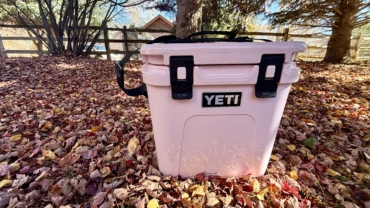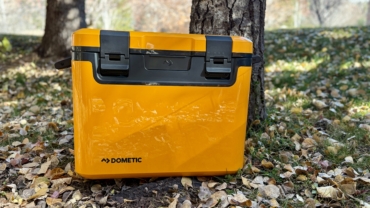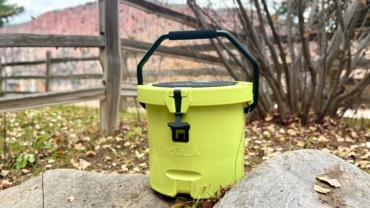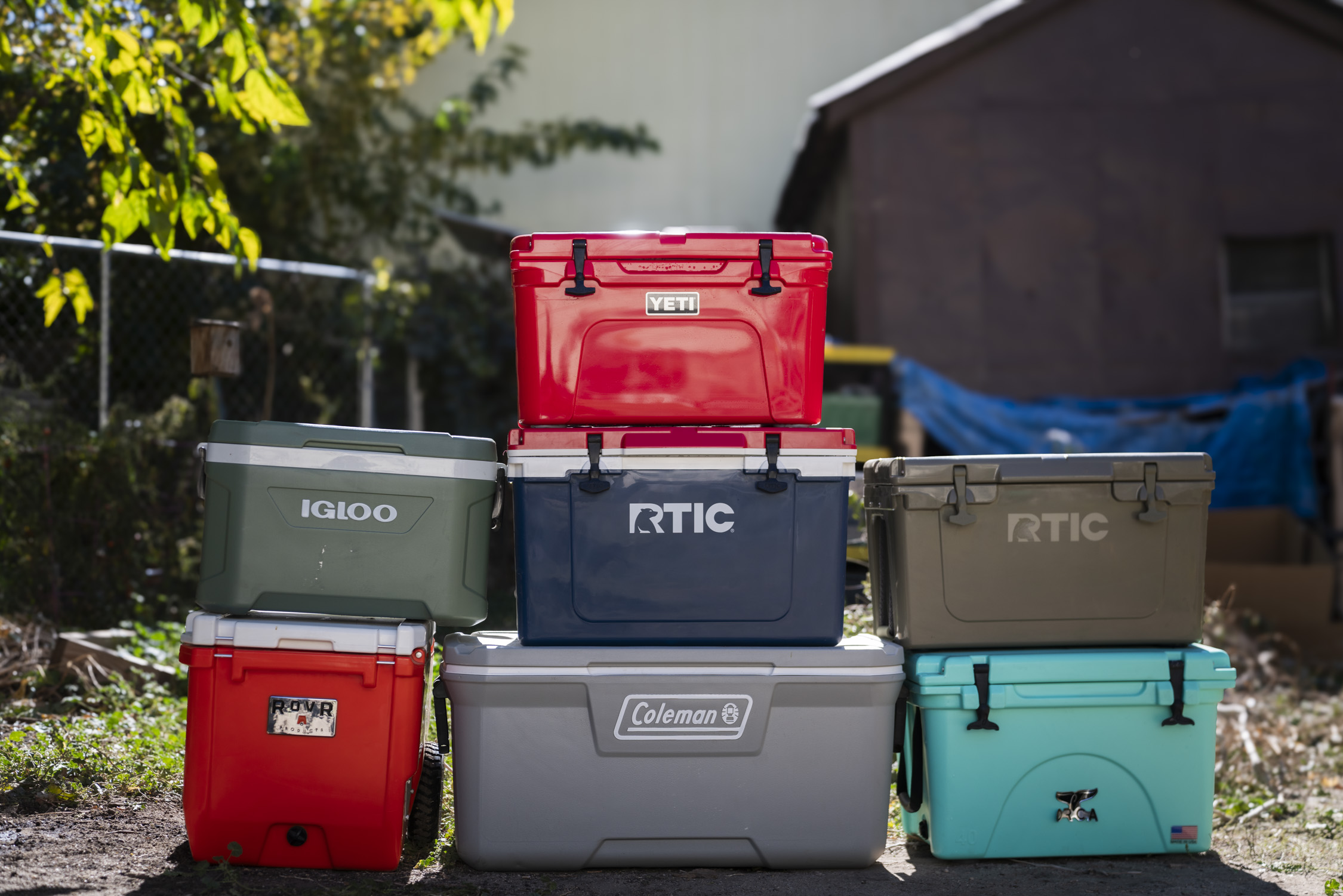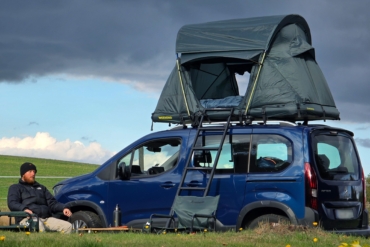The Gear Junkie: Jetboil Helios
By STEPHEN REGENOLD
The race to boil a liter of water began with the slight nudge of a fuel dial. The cartridge then spat its contents, a pressurized blend of isobutene and propane, down the line and to the burner. I clicked the ignition switch for a spark, and — KABOOM! — a flame rocketed to life.
My watch was ticking as the water started to warm. Little bubbles and steam percolated in the pot. Underneath, the whir of a great blue flame, as if from a small jet engine, torched metal to a red-hot glow.
It was the maiden voyage of Jetboil’s latest camp stove creation, the Helios High-Performance Cook System. As with the Helios’ predecessor products, Jetboil (www.jetboil.com) had made some big claims upon debut of the all-in-one system.

An inverted fuel canister gives the Helios a major flame-production advantage, according to the company.
The stove — which comes with an integrated 2-liter cooking pot and costs $150 — was touted to have “best-in-class efficiency and boil time performance.” Indeed, a cold liter of water, the company claimed, could be converted to a bubbling brew within three minutes.
In my test, where I kept the cover on the pot while it warmed, my liter of water did, in fact, hop to a bubbling fit, boiling in 2.5 minutes flat — twice as fast as some stoves I test and beating even the company’s own marketed figure.
The secret to the Helios’ propensity to torch is rooted in two product features: 1) The company’s proprietary FluxRing, a corrugated metal stripping on the bottom of the pot, captures and “focuses” heat to increase burner efficiency; 2) The upside-down isobutene/propane cartridge and special fuel line allows the Helios to feed fuel to the burner in a liquid state for consistent heat output.
While other stoves can use the same type of isobutene/propane cartridge as the Helios, the company says it has optimized the cartridge-fed fuel method by ensuring consistent high-output. For traditional cartridge stoves — including the Jetboil PCS, the company’s first model — liquid fuel is evaporated upward within the cartridge and gas is fed under the can’s pressure into the burner. This process cools the cartridge and its contents, reducing fuel output.
In the Helios design, where the cartridge is inverted, the stove is fed liquid fuel, which is evaporated at the burner, keeping the cartridge at a uniform temperature and ensuring a hotter flame.
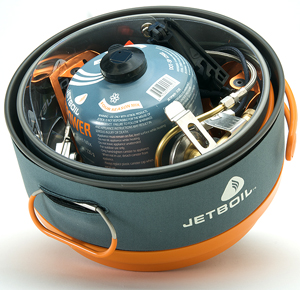
Like other Jetboil products, the Helios was made to pack inside its included cook pot for easy transport.
Further, because there is no evaporative cooling of the fuel in the cartridge, the Helios is less prone to loss of output in cold temperatures, which is a major issue with all cartridge stoves I test.
While I didn’t get to try it out in the cold — I got my test stove in May — the Helios lived up to its claims on all warm-weather fronts. As stated, it boiled water in a blink. It cooks stew or pasta fine, the flame decreasing from a 10-inch-tall dancing blue genie to a small simmering fire with the subtle twist of the control dial.
The stove is pricey when compared against minimalist models like the MSR Pocket Rocket, which goes for $40 and does a fine job cooking oatmeal. And the Helios will be considered bulky and a bit heavy by ultra-light backpackers, as the system weighs just over 2 pounds when you include a cartridge. The pot, which doubles as a carrying case for stove components, measures 7.75 inches across and is 3.5 inches deep.
But if you want a simple-to-use system — and have a need for hot, bubbling water quick — the Helios will not disappoint. It might just be the little jet engine of your dreams.
(Stephen Regenold writes The Gear Junkie column for eleven U.S. newspapers; see www.THEGEARJUNKIE.com for video gear reviews, a daily blog, and an archive of Regenold’s work.)

